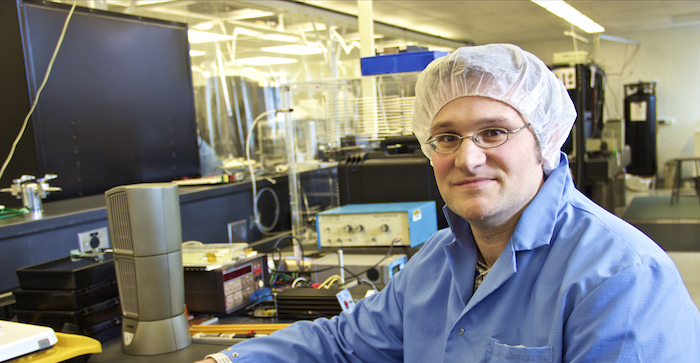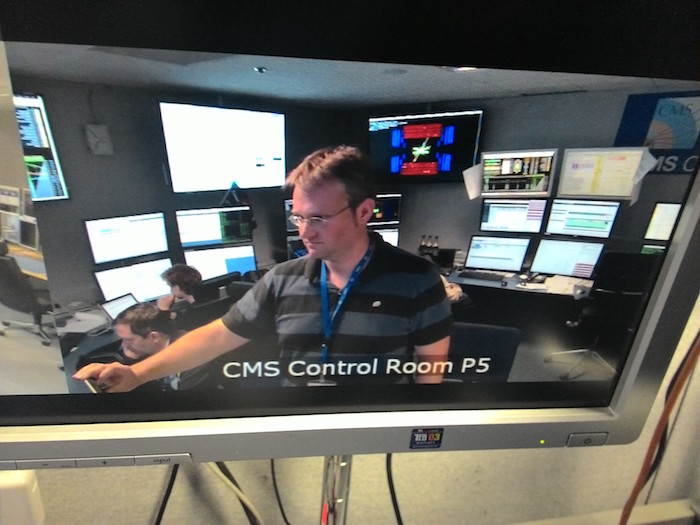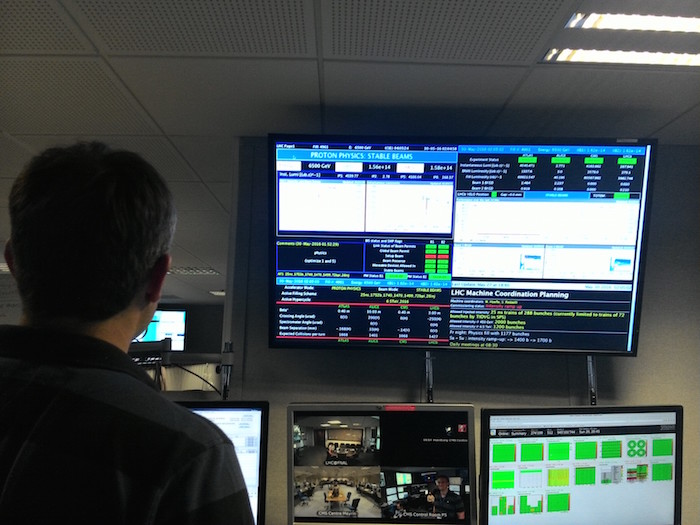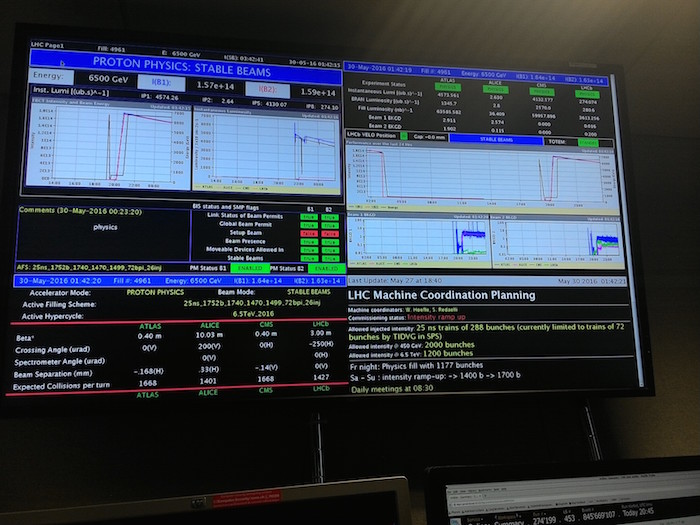Purdue physics professor leads research efforts at CERN
06-09-2016
Author(s):Tim Brouk

Physics and Astronomy professor Andreas Jung in his clean room laboratory inside the Physics Building.
The Department of Physics and Astronomy has been a presence at CERN for decades. Faculty members and graduate students were there when the Higgs boson was discovered in 2012 and they are there four years later on the brink of another major discovery in particle physics.
Andreas Jung is one of the department’s newest professors and he has been stationed on CERN’s Large Hadron Collider (LHS) for months. He is happy to report back to West Lafayette about the brewing excitement at the world’s largest particle accelerator.
Question: What is your history at CERN? How many times have you been? How long do you stay?
Answer: I am a member of CMS (a LHC/CERN experiment) since 2013 and I have been multiple times at CERN since then for various reasons: shifts at the experiment, workshops and detector development. This time, I stay two months at CERN.
Q: What are your primary tasks at CERN?
A: For this trip my primary tasks are to carry out shifts at the CMS experiment (overlooking smooth data taking and detector operation as a shift leader), carrying out detector/software development for CMS and multiple workshops on optimizing analysis methods to squeeze out every bit of information there is.

Jung doing work at CERN.
Q: How is Purdue’s representation there? Purdue Science had a strong presence in 2012 for Higgs but that was then … .
A: Purdue postdocs are present for a significant fraction of the time per year as well as faculty members like me, of course folded with the teaching/lectures each of us does.
Q: What is the vibe at CERN? Is it the ultimate goal for particle physicists?
A: It is an extremely exciting time since the LHC re-started with better performance than ever, which will turn in much more data collected by the end of the year than expected. This allows data analysis to be more sensitive to new physics and yields more precise results to challenge our best theoretical model, the standard model.
Q: I heard rumors of another significant discovery getting ready to be announced. What can you tell me about that?
A: Yes, indeed that is also one of the reasons why it is an exciting time for being at CERN. There are hints at this time for a possible new resonance/particle at very high mass (~750 GeV, about six times heavier than the Higgs). CMS and ATLAS both see indications for it but so far it is not significant enough to be called an observation and it can still be a statistical fluke. The next months will tell if those indications are true and turn in an observation of a new elementary particle heavier than anything we have seen so far.
My group is working on a measurement of the spin correlations of top quarks and by looking at the invariant mass spectrum of the top anti-top quark pair we can isolate the mass region of 750 GeV where CMS and ATLAS currently see hints for a new particle. The 750 GeV resonances would decay into a top anti-top quark pair. This is a complementary way of understanding the nature of the potential new particle. So, Purdue is at the deeply involved in a potential next discovery.
Q: When will you be back to West Lafayette?
A: Early June. I will be back on campus working with undergrad students over the summer on silicon detector development.


Jung overseeing data from the famous Large Hadron Collider at CERN.
